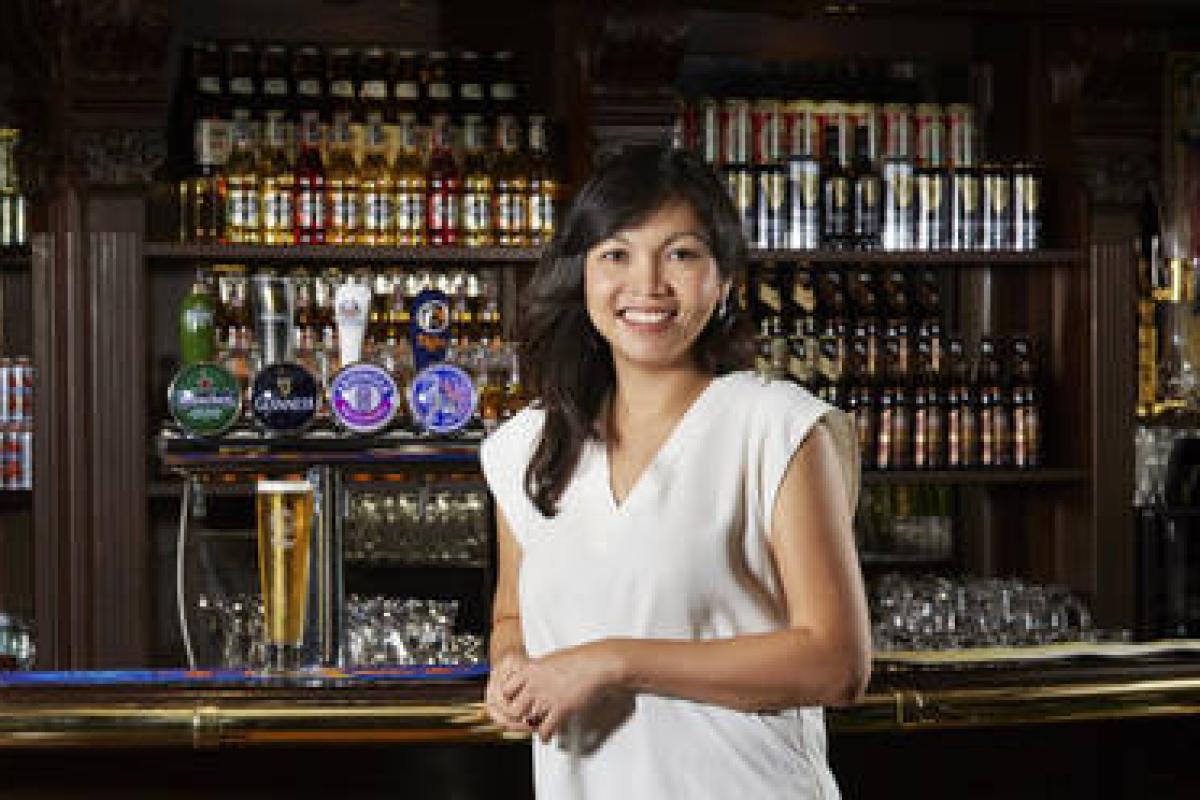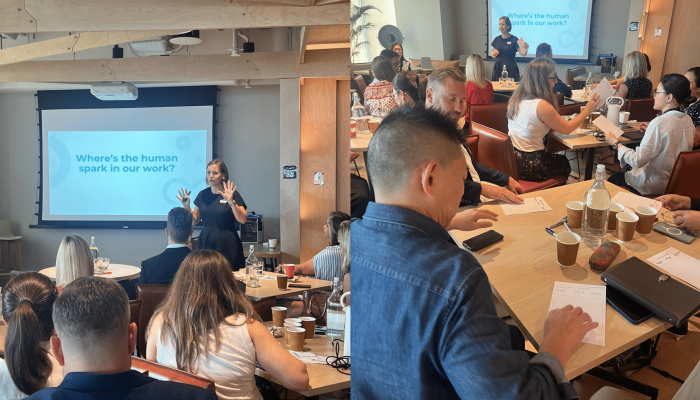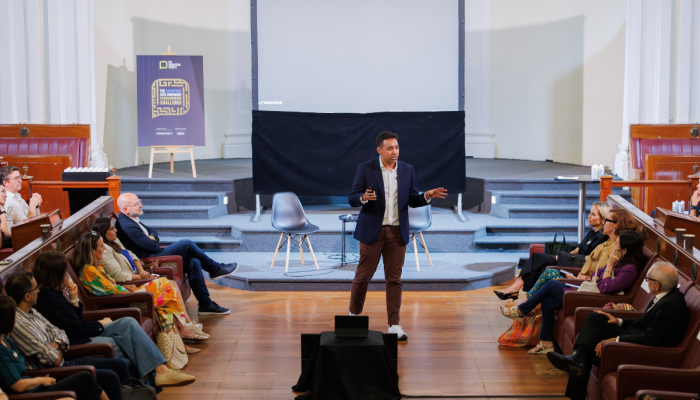If there is just one way to describe Venus Teoh (pictured), the head of marketing at Asia Pacific Breweries (APB) Singapore, it would be bold.
“I am bold,” she laughs, as we sit down for a chat. “That’s how I’ve been since I started marketing.”
Teoh is a big believer that without pushing the boundaries, great work cannot emerge. A risk-taker by nature, she prides herself on not playing it safe. And if a backlash is to happen, “leverage on it”, she says.
“Here in Singapore, we tend to be safe. People tend to do things within the boundaries,” she says.
But today, “typical” marketing stunts are no longer enough, especially as the media landscape becomes more fragmented, and consumers become selective with the information they absorb. A backlash, as such, can be an advantage as well.
“But we have to make sure we take calculated risks. So, in whatever we do, we always have contingency plans. We always think ahead,” she explains.
One such example was for a provocative Desperados campaign she recently worked on called “Paint the unpaintable city”. The campaign saw artists such as the infamous Samantha Lo (better known as the Sticker Lady) create branded graffi ti-style artwork on the walls of the National Gallery, National Stadium and People’s Park Complex.
With vandalism outlawed in Singapore, the artists used a spray can to graffiti the walls with light in real-time. A bike loaded with all the required equipment roamed the streets of Singapore between locations, and the artwork itself was created using a specially adapted spray can equipped with an infrared LED light.
“In Singapore, you see, you’re not supposed to do graffiti on the walls, so we thought perhaps Desperados can find a way to make graffiti cool and possibly legal in Singapore,” she says.
“But obviously we were asked by a few rangers what we were doing and if we had permits.”
As such, the team took extra precautions to make sure everything was legal and done with the knowledge of the building owners.
“The National Gallery was very open to the idea. This was one way for us to promote art without breaking the law,” she says.
Nonetheless, before launching the campaign, a lot of thought went into creating a plan B – should there have been a backlash from the government.
“We had to think of how we could leverage negative publicity. I mean, at one point, we actually wanted a police car to stop us because if we broke the rules, we’d make the front cover (of newspapers) and the Desperados brand awareness would have jumped 100%,” she admits.
Another campaign she describes as “nerve-wrecking”, also for the Desperados brand, was the 2015 Zouk Out stunt. Since the brand was only launched a year before, Teoh needed to work with her team to ramp up awareness of the tequila-flavoured beer, targeting the young and adventurous 18 to 24-year-olds.
As such, the brand recruited 20 elderly folks and got them to hold banners to protest Desperados at the entrance of Zouk Out. They were holding Desperados banners shouting and chanting “No Desperados”.
“We had three rangers’ police cars checking if we had licence to do this unexpected stunt. My colleague Mitchell Leow (head of corporate relations at Asia Pacific Breweries Singapore), and I were there prepared to be interviewed by the rangers. But it was great.”
She adds that because the Desperados brand is for the young and adventurous, she wanted the marketing stunts to “walk the talk”.
The Tiger story
But, of course, not every brand is as daring as Desperados. Each brand has to carve out its unique positioning. For Teoh, Tiger still takes up a chunk of her time, being the mainstream brand. By definition, this means the brand needs to have broad appeal.
The unique challenge Tiger has is there are older generations who are used to a certain image of the brand, but at the same time it is now having to target a younger group of drinkers to make the brand cool again.
Teoh says that for the Tiger brand, the past few years have been shaky. Its engagement rate with consumers has not always been the strongest and to turn this around, she and her team took to the streets to change the perceptions Singaporeans had about the brand.
“It wasn’t easy to try and speak to everyone,” she says.
“When we briefed our creative agency, BBDO, the brief was very clear: whatever we do, the brand must be real, it must be genuine.”
And that’s where the agency came back with the hawker stories. With no script in hand, and just raw real stories, Teoh and her team took on the risk the campaign might be digital heavy, and as such, not reach out to older consumers. Also, since the first film was in Teochew, it couldn’t cross into free-to-air channels. To Teoh and her team’s surprise, the campaign not only reached out to the young, but also to the old.
“It had a lot of social media talkability. Storytelling based on a real genuine story really connected. We used Teochew because the hawker was more comfortable in Teochew, and we wanted him to be comfortable, just be him, and tell his story in his own words. And it worked,” she says.
Her journey into the world of marketing
Teoh’s first role in the world of sales and marketing was with a FMCG company, Sara Lee. There, she went through nine months of a rigorous management training programme where she was sent all over Malaysia to learn about sales and marketing. But she believes her first rub with marketing was when she ran for president for a student council team.
“I remember one day I had a friend who came to me and said that they were looking for a new president for the student council. And I said, all right then. And I ran for it. It was really like an election where you had to rally your voters to vote for you. That, to me, was really my first experience in marketing,” she says.
Fast forward to today, coming back to work on Tiger is almost like coming a full circle. She joined APB in 2003 in a sales role as a channel development manager and she worked her way up, basically pursuing innovations for Tiger. She then left the Tiger brand to manage the entirety of other APB brands.
Post the Heineken acquisition, she oversaw the development of the mainstream brands across the Asia Pacific region, then resumed to head the regional innovation and international brands team, before joining APB Singapore as head of marketing in 2015. As such, she is a strong believer that sales enrich marketing knowledge. For her it certainly has.
“When I look at marketing strategies, it’s not just about creating an emotion. My philosophy of marketing is that marketing does not stop in advertising. The job ends when a consumer actually picks up the product. It is until the very end,” she said.
This article originally appeared on www.marketing-interactive.com



